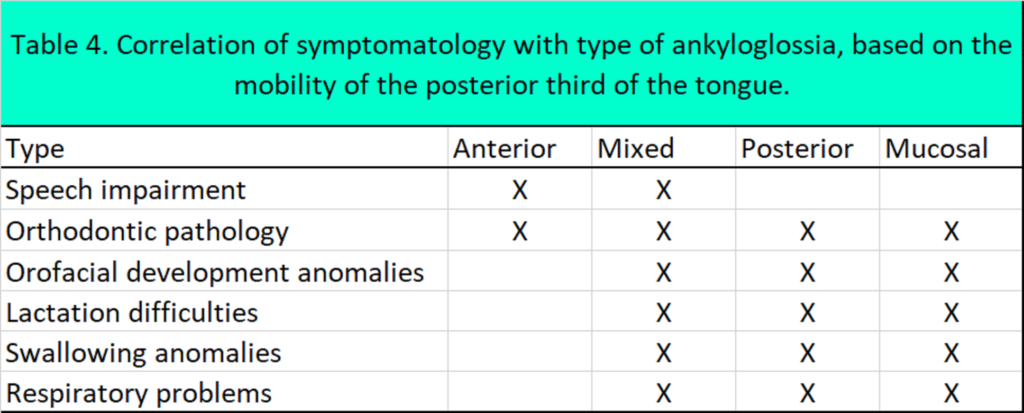
Ankyloglossia (tongue-tie): proposal of a new classification
The FreLac team (1), with extensive experience in the care of ankyloglossia, has recently published an article proposing a new classification for tongue-tie (more on its prevalence here).
Until now, the most commonly used classifications have been mainly anatomical, focusing on the appearance of the frenulum without taking into account its symptomatology.
The FreLac team’s proposal takes into consideration both, the anatomy and the related symptomatology.
They propose 4 types of limiting sublingual frenulum:
Anterior tongue-tie
This is a frenulum with insertion only at the tip of the tongue, but the body is elastic, so there is a correct mobility of the back of the tongue.
This is rarely seen in consultations because it is very visible and is usually treated very early, usually before 48 hours of life. Even so, it should not be confused with tongue-tie involving a posterior component, with what would be a masked mixed tongue-tie.
This is a tongue-tie that, if properly diagnosed, has very few implications in breastfeeding as the back part of the tongue is free. It is usually related to difficulties in speech and pronunciation, as well as the appearance of open bites.
Mixed tongue-tie
This is a tongue-tie that has an anterior and posterior component. It would be usually classified as Coryllos classification II and III. This tongue-tie has an inferior insertion in the alveolar ridge with three insertion points, like a tripod.
It has a direct implication in speech and orofacial development due to an inability to achieve proper tongue mobility.
Posterior tongue-tie
Positioned posterior to the middle of the tongue and anchored inferiorly to the salivary glands or posteriorly, it is observed visually. The difficulties derived from this type of frenulum usually occur when swallowing and in orofacial, bone, and respiratory development.
Mucosal tongue-tie
This type of tongue-tie is not observed visually but requires palpation or a tongue elevator to be able to observe it correctly.
The upper and lower insertions are located within the sublingual mucosa.
This type of tongue-tie shares the symptomatology of mixed and posterior tongue-tie and also hinders, on many occasions, a direct lactation at the breast, because it limits the posterior movements of the tongue.
In this publication, the authors summarize the symptoms according to the type of tongue-tie in the following table:

Table (translated) from the publication by De Quixano et al (2023)
This proposal of ankyloglossia care according to the symptomatology and its consequences can be a help for both babies and breastfeeding mothers.
Research in this field is still limited, and the search for tools adapted to the needs of breastfeeding care is fundamental.
(1) De Quixano, J, Parri, S., Ruiz, L., Rodríguez, N., Ruiz, M.M., Parri, F. (2023). New classification in ankyloglossia: paradigm shift. Maxillaris, 96-103.